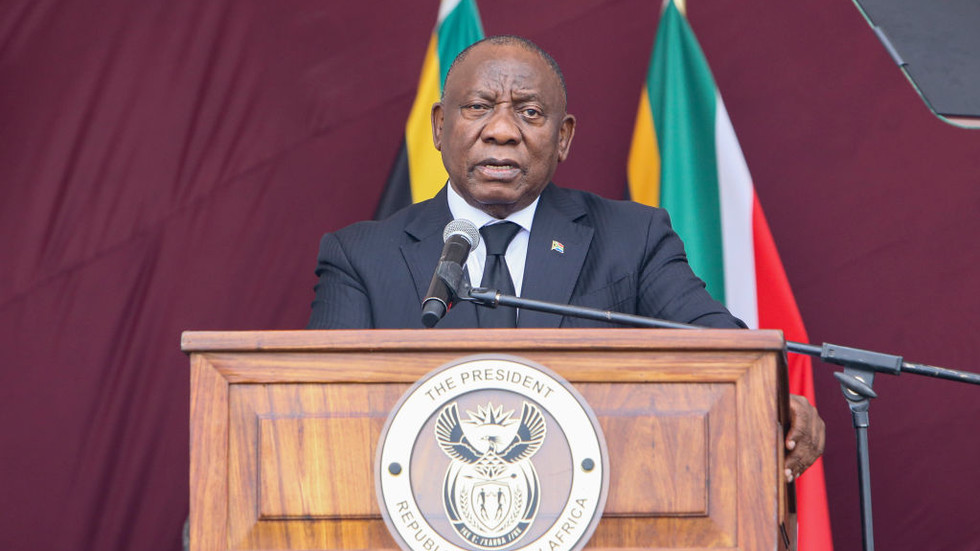Myanmar is producing and exporting more illicit drugs as an ongoing civil war between the ruling military junta and armed ethnic rebels batters the agriculture-based economy.
Myanmar has been in crisis since February 2021 when the military ousted the country's democratically elected government in a coup that sparked mass protests, and eventually an armed insurgency.
According to a report from the UN Office on Drugs and Crime (UNODC), Myanmar's opium fields grew by 18% to a total of 47,100 hectares (181 square miles) in 2023.
Myanmar's surge has also coincided with Afghanistan's opium farming dropping almost completely after the Taliban took over in 2021 and banned opium cultivation. According to the UNDOC, Myanmar has topped Afghanistan as the world's largest producer of opium.
Zachary Abuza, a professor at the National War College in Washington who focuses on Southeast Asia politics and security, told DW that the surge in opium production is "no coincidence, and comes as Myanmar's economy has collapsed.
"Myanmar's GDP has fallen 12% since the coup. The rural credit system has all but collapsed, meaning farmers are desperate to find other means to support themselves," he said.
Myanmar's history of opium production
The UNDOC report said that Myanmar's Shan State, which borders Thailand, Laos, and China, continues to be the center of the country's opium production, with 88% of total cultivation area located there.
 The sap from opium poppies is the raw ingredient of herion Image: Ye Aung THU/AFP
The sap from opium poppies is the raw ingredient of herion Image: Ye Aung THU/AFPThe state also showed the highest year-on-year increase in opium cultivation at 20%.
Farming opium has long been a source of income for people in Myanmar. The "Golden Triangle," a region spanning the jungle frontiers of Myanmar, Thailand and Laos, has historically been a notorious area of drug production and smuggling.
Opium is a strong narcotic that is produced from the poppy plant. In Myanmar, it is mainly farmed in Shan and Kachin states and often attracts poverty-stricken farmers because of the financial return is much more generous than crops such as rice.
The rise of opium production has been coupled with higher heroin exports. Heroin is derived from morphine, which is a key alkaloid found in opium. Over 150 tons of heroin were exported out of Myanmar in 2023, valued at over $2 billion.
Methamphetamine the most popular drug
Heroin is far from the only drug produced in Myanmar. Patrick Winn, an American journalist specializing in the Southeast Asia drug trade, and author of the book "Narcotopia," told DW that methamphetamine is "far and away the preferred narcotic in Asia."
"Although heroin production in Myanmar is up, meth is still king in the region," he said pointing out that producing heroin is a "headache" when compared with synthetic drugs like meth.
"The raw ingredient, opium, requires lots of soil, decent weather and hard labor in the fields. Meth is synthesized indoors, in labs impervious to weather, by small teams of chemists. You get far more value for far less labor."
"The present and future of narcotics is synthetic … so unless customers' tastes change, there may be a ceiling to the volume of heroin that regional drug syndicates can sell," said Winn.
What is being done to combat the drug trade?
According to researcher Abuza, the Association of Southeast Asian Nations (ASEAN), and the wider international community, needs to do more to dampen Myanmar's illegal drug industry, including sanctioning the trade of precursor chemicals needed for producing drugs like heroin, meth and ketamine.
"ASEAN is doing absolutely nothing constructive with regards to Myanmar right now," he said.
"Until ASEAN states, as well as China and India, begin to ban the sale of precursor chemicals, I see no end to their industrial-level production. The international community should be very concerned about the sharp growth of the illicit economy in Myanmar, as the overall economy continues to atrophy," he added.
Myanmar's economy collapsing
Despite the illegal drug economy prospering, Myanmar's legitimate economic outlook is grim. Myanmar is the only country in East Asia that hasn't recovered its economy to pre-pandemic levels, with GDP growth of just 1% expected in 2024, according to a report by the World Bank.
Aung Thu Nyein, a political analyst from Myanmar, said the economic downturns have affected daily life everywhere in the country.
"Consumers across Myanmar over the last three years have experienced strong price inflation for essential goods such as fuel, palm oil, rice, and medicines," he told DW. "Many households in Myanmar now face increasing difficulties making ends meet," he said.
Myanmar's currency, the kyat, accelerated to 4,500 to $1 USD in May.
"Increasing money supply, depreciation of the kyat, and global commodity price rises are all contributing to the rapidly rising inflation, eroding real incomes," the analyst said.
One issue for out-of-work people in Myanmar is that two of available solutions to make money both carry risks.
The illicit drug trade carries the threat of being caught by authorities, with those guilty of drug possession or trafficking risking lengthy prison sentences, and in some offences, the death penalty.
Another option is enlisting in the military. In February, a decade-old military conscription law was activated that will see men and women called up for at least two years of service. But that also affects the economy, Aung Thu Nyein said.
"The negative impacts of the conscription law seem quite palpable in various sectors, because of labor dislocation and disruption of work. In the white-collar sector, such as in office work and banking sector, many talented people are willing to migrate overseas, rather than seek promotions in their job line. This situation could lead to a human resources crisis," the analyst said.
Myanmar junta battles insurgent groups
Edited by: Wesley Rahn

 5 months ago
18
5 months ago
18








